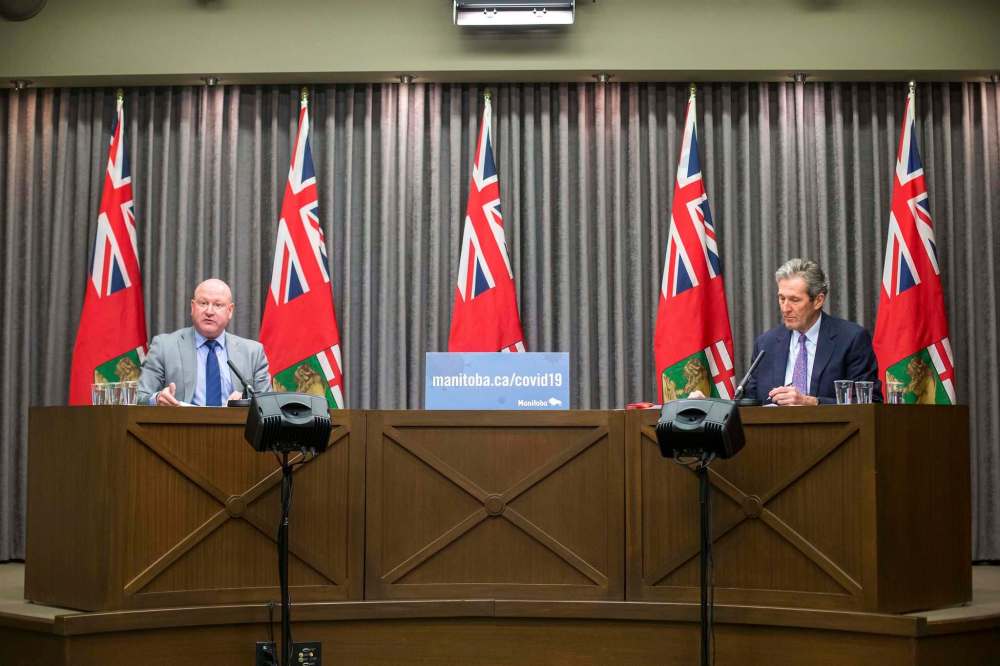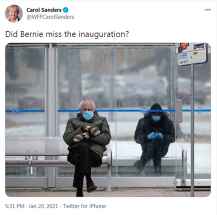Province delivers responsible reopening plan Loosening restrictions not without risks and some businesses left out, but measures will reduce frustration level for many Manitobans
Read this article for free:
or
Already have an account? Log in here »
To continue reading, please subscribe:
Monthly Digital Subscription
$19 $0 for the first 4 weeks*
- Enjoy unlimited reading on winnipegfreepress.com
- Read the E-Edition, our digital replica newspaper
- Access News Break, our award-winning app
- Play interactive puzzles
*No charge for 4 weeks then billed as $19 every four weeks (new subscribers and qualified returning subscribers only). Cancel anytime.
Read unlimited articles for free today:
or
Already have an account? Log in here »
Hey there, time traveller!
This article was published 20/01/2021 (1191 days ago), so information in it may no longer be current.
The Pallister government got Manitoba’s pandemic reopening plan right — or as close to right as any jurisdiction could right now.
As expected, all retail stores will be allowed to open beginning Saturday with no restrictions on what they can sell (but will have to follow capacity limits). Among the changes, hair salons can open and up to five people can gather on private property.
With case numbers still relatively high, it would have been disastrous to go any further.
Most importantly, the province found a reasonable compromise on the thorny issue of household gatherings.
The original proposal, floated earlier this week, would have allowed two visitors per household at a time. It would have given Manitobans the green light to host many visitors over multiple days; it didn’t specify that it had to be the same two people.
It would have created significant risk of widespread transmission.
Under the revised plan, each household is limited to two designated visitors, which carries far less risk.
Loosening those rules was not done lightly.

Prolonged contact between people indoors, especially when masks are not worn, is the main source of SARS-CoV-2 transmission. The spread is not limited to droplets — the larger particles people emit that can infect others within two metres. Emerging science has found aerosols, tiny particles that can remain suspended in the air for longer periods, also transmit the virus.
The World Health Organization, the U.S. Centers for Disease Control and Prevention, and the Public Health Agency of Canada have all identified aerosols as a potential source of transmission, even when people socially distance. Those risks are diminished with mask use and good ventilation.
The problem is most people don’t wear masks in their homes and probably won’t open their windows in the winter. They may try to keep their distance from visitors and refrain from physical contact. But that’s not enough. The science shows when people gather indoors for prolonged periods, even two metres apart, they risk infecting each other.
Household gatherings have been identified by Manitoba public-health officials as one of the top areas of transmission over the past few months. It’s why the province finally agreed in late November to ban it (replacing a previous rule that allowed up to five visitors per household).
The household ban is probably one of the key reasons Manitoba didn’t see a spike in cases after the holidays. Not everyone obeyed the rule, but most did. If it had not been in place, cases would likely have soared.
Household gatherings have been identified by Manitoba public-health officials as one of the top areas of transmission over the past few months.
Allowing two designated visitors per household comes with some risk (as the easing of any restrictions will). The challenge for government is trying to find the right balance between risk and benefit, which is far from an exact science.
It has to be done at both micro and macro levels and sometimes the two don’t align. The province can’t open everything at once without risking a massive surge in cases, but it can’t keep everything closed when case numbers trend lower.
The best government can do is try to measure transmission risk and balance it with community priorities. Retail stores are a good example; many have been disproportionately affected by closures but can reopen relatively safely. There’s a clear net benefit.
Bars and restaurants have also been hard hit but they’re higher risk.
In some cases, there is no right decision when it comes to choosing between sectors. Why can’t gyms open when most could operate relatively safely with masks, capacity limits and strict hygiene protocols? They were on the short list for reopening but didn’t make the final cut. Why? Because at the macro level, the province can only open so many things at once and some sectors have to fall by the wayside (which is why governments have to do far more to compensate businesses and not-for-profits that have sacrificed the most).
Considering the complexities involved, the Pallister government struck the right balance between providing some relief to exasperated Manitobans and minimizing the risk of a COVID-19 surge.
tom.brodbeck@freepress.mb.ca

Tom Brodbeck
Columnist
Tom has been covering Manitoba politics since the early 1990s and joined the Winnipeg Free Press news team in 2019.







